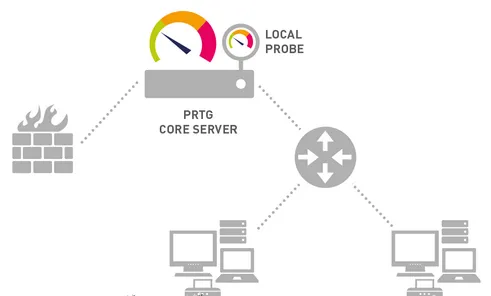Welcome to PRTG Network Monitoring Training! Today we will introduce you with a simple but powerful software to monitor the entire network.

A question for each network administrator: Why is network monitoring important?
Almost every business today relies on a computer and network infrastructure to manage the Internet, network, telephone and email. A set of servers and network equipment is also needed to ensure that integrated business information flows among employees, offices and customers. The economic success of an organization is strongly linked to data transfer.
That's why your computer network should work well: reliability, speed and efficiency are very important. Like all other technical objects, network devices may encounter problems at a time, potentially causing problems and loss of sales.
Therefore, network administrators need to maintain network reliability and network speed.
Required capabilities:
- Launch a good network and use reliable equipment and plan your network well.
- Create a good program when it comes to the issue.
- Supervise the network to receive information on the issue.
Network monitoring with PRTG software
PRTG Network Monitor is a powerful software for monitoring network and Windows-based systems. This software is suitable for small, medium and large networks and is able to monitor LAN, WAN, WLAN and VPN networks. You can also monitor web sites, emails and server records, Linux systems, Windows, routers, and many more.
PRTG monitors network access and bandwidth usage, as well as various network parameters such as service quality, memory usage and CPU utilization, even monitoring remote devices.
Launching this software is very simple and monitoring the network using the protocols: SNMP, WMI, packet sniffe, IPFIX and...
The PRTG Network Monitor continuously monitors the network and the availability of network systems. Data recorded in an internal database is stored for later analysis.
